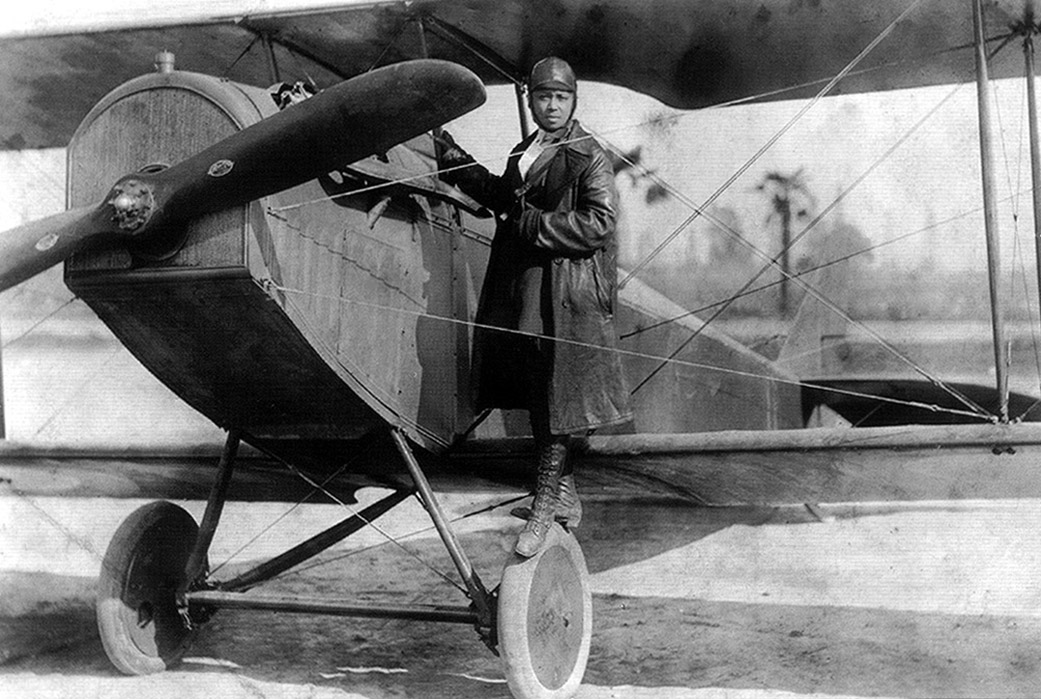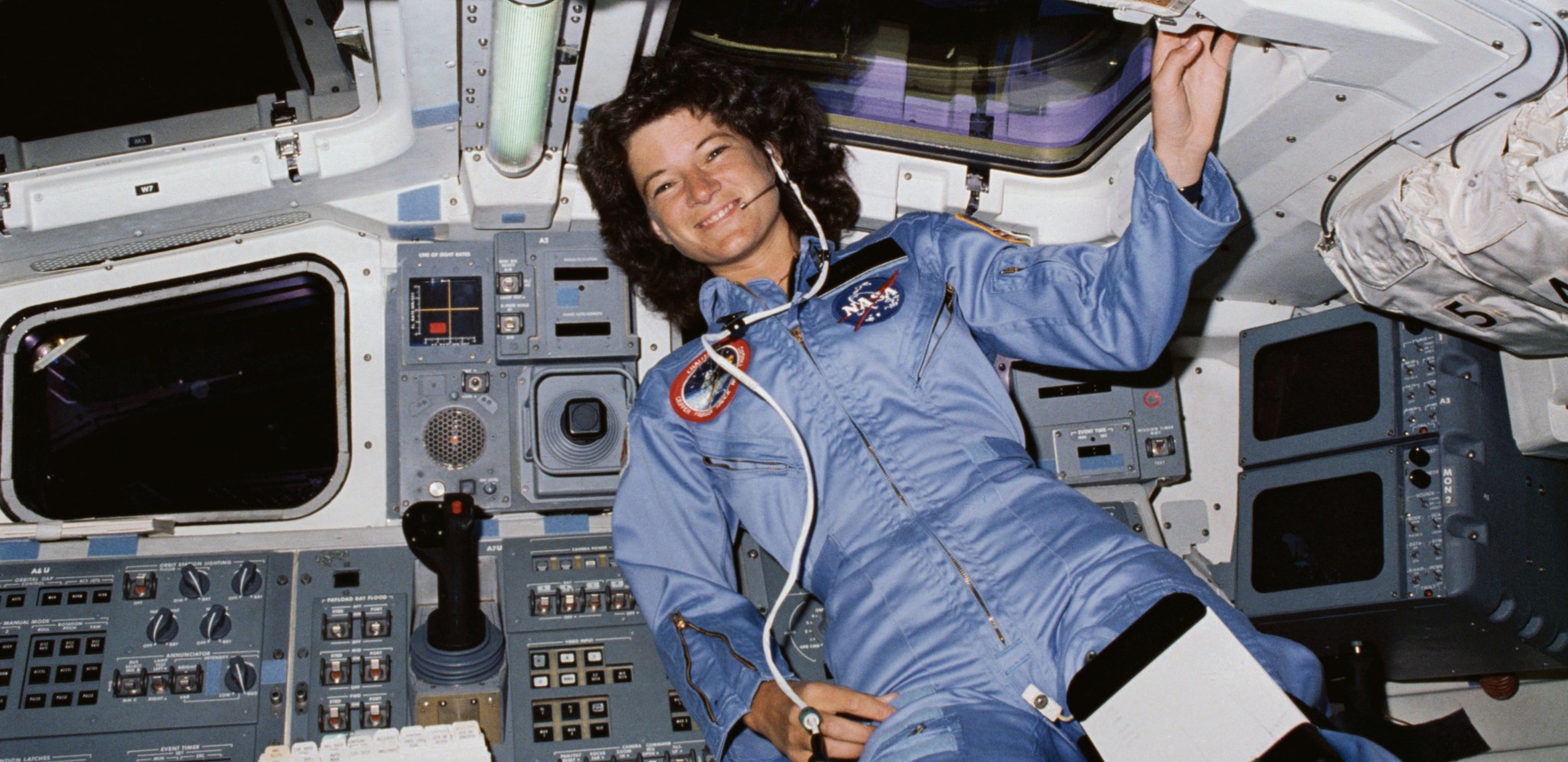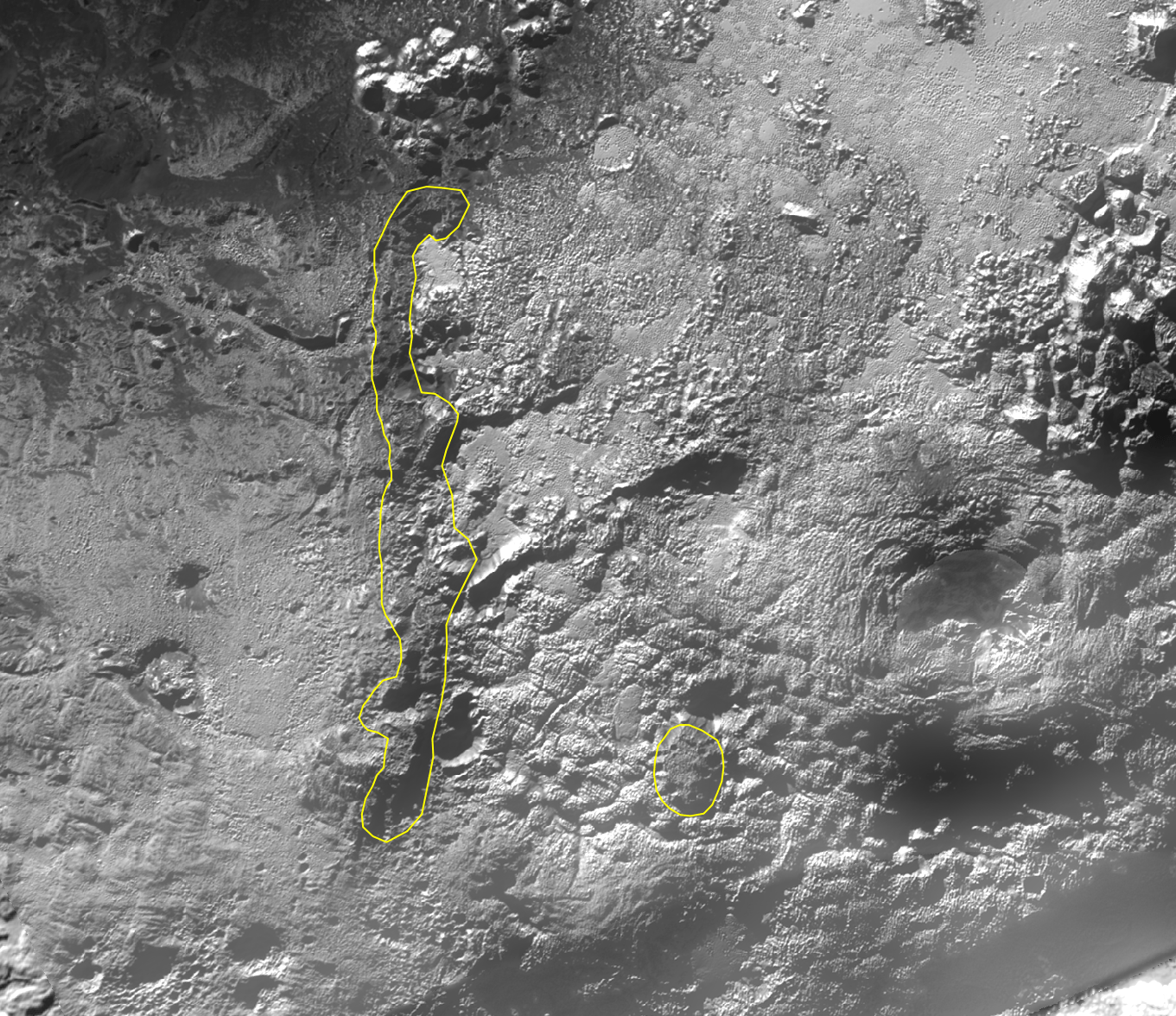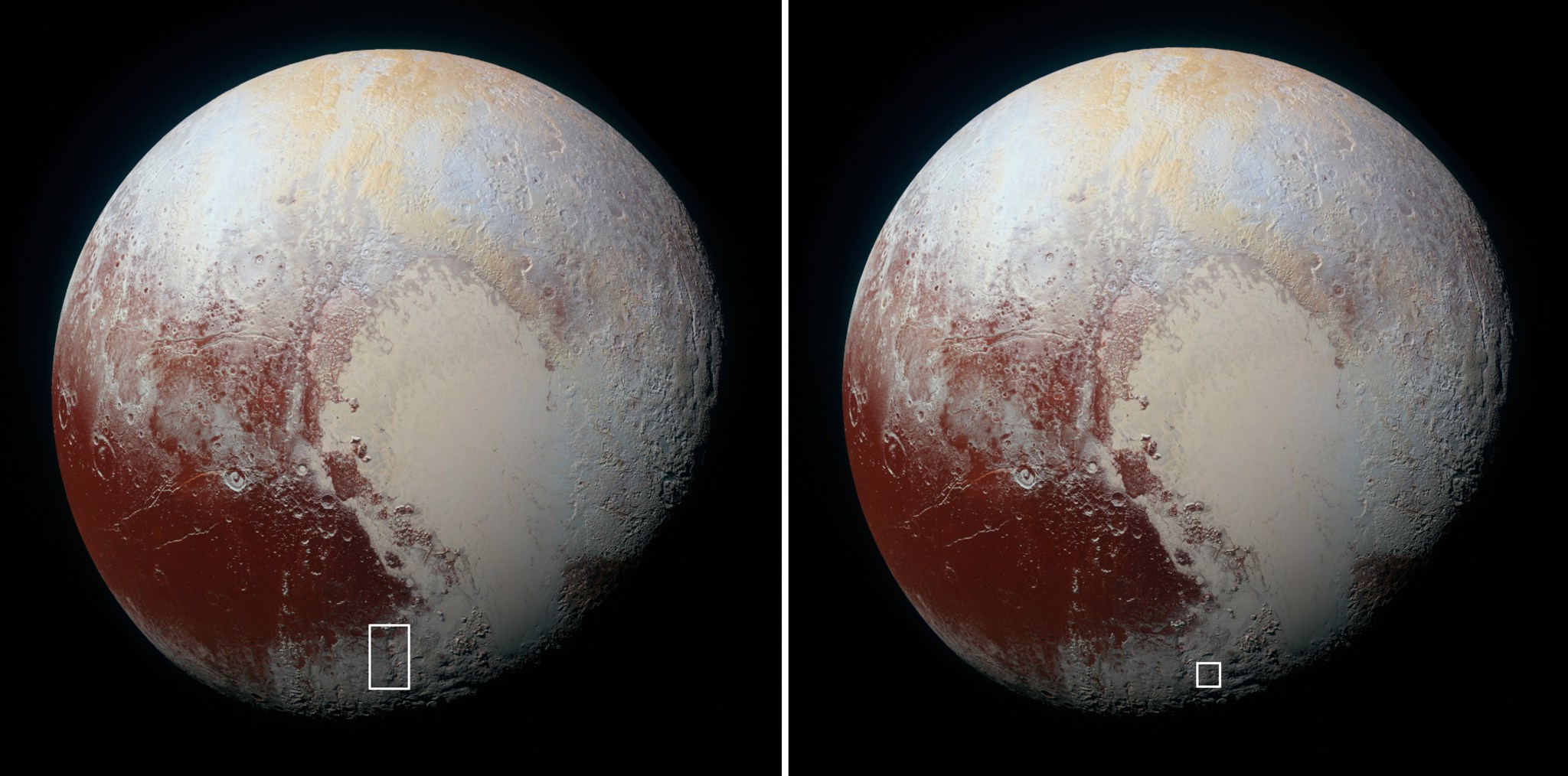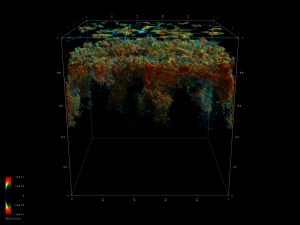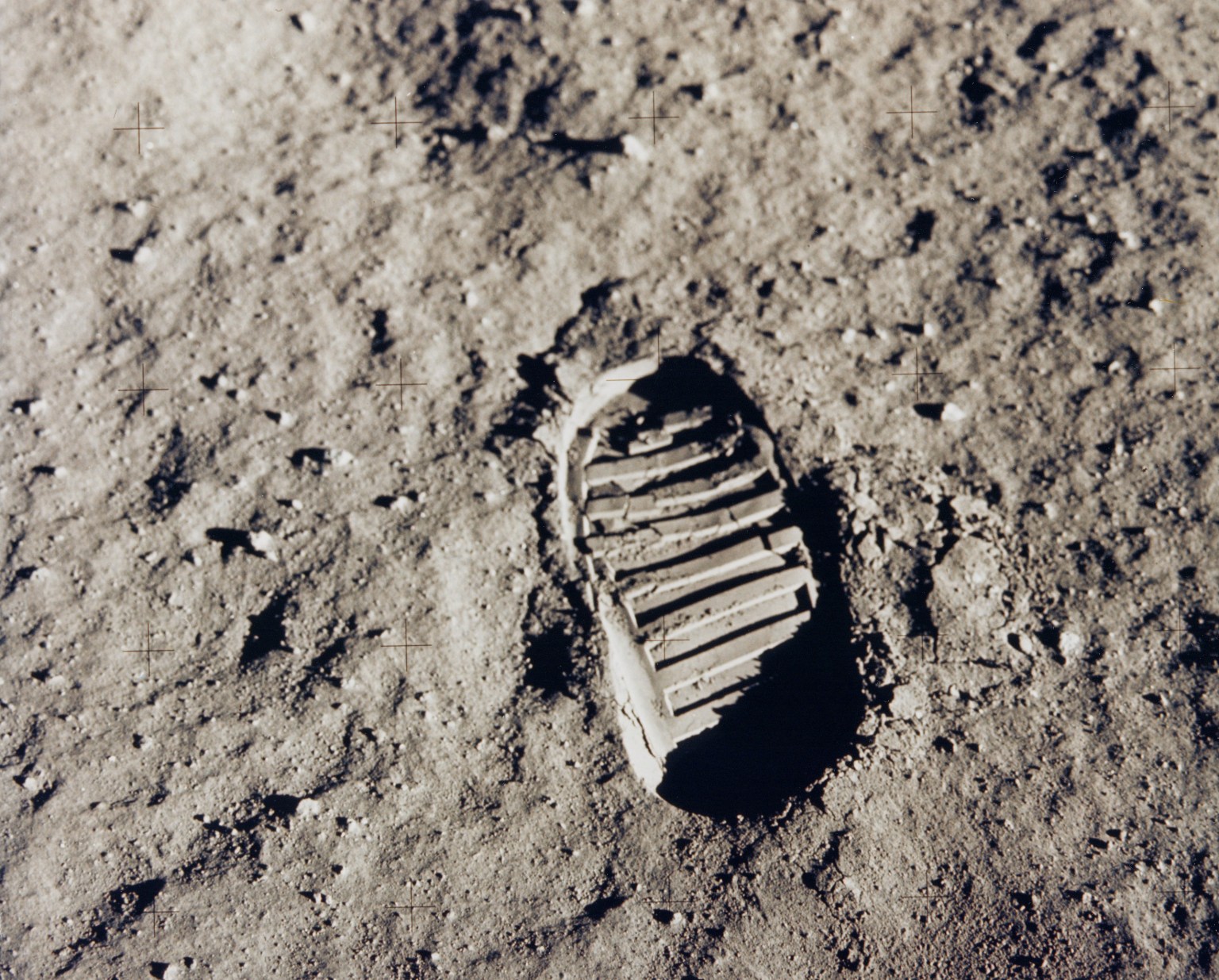More than 60 years after Bessie Coleman broke the bonds of terra firma to become the first African American woman and Native American to earn a pilot’s license, Sally Ride blasted off aboard shuttle Challenger to become the first American woman in space.
The lives and accomplishments of both women aviation pioneers have now been honored with the naming of landmarks on Pluto. The International Astronomical Union recently approved the names “Coleman Mons” and “Ride Rupes” for two large geological features on the southern hemisphere of Pluto, which itself was explored for the first time by NASA‘s New Horizons spacecraft in 2015.
Members of the New Horizons mission team proposed the names to the IAU, in line with a convention that Pluto features include those named for “historic pioneers who crossed new horizons in the exploration of the Earth, sea and sky.”
“Sally Ride and Bessie Coleman were separated by generations, but they are forever connected by their great achievements, which opened doors for women and girls around the world,” said NASA Administrator Bill Nelson. “In breaking barriers they motivated so many women to pursue dreams – and careers – they didn’t think were possible, and their sheer persistence and pursuit of equality inspire people to this day.”
Ride’s spaceflight aboard Challenger in June 1983 made her not only the first American woman to reach space, but at 32, the youngest American to do so. She flew on Challenger again in 1984. Ride has been widely lauded not only for her exemplary work at NASA, but for her focus on educating and encouraging the next generation of scientists and astronauts. She cofounded Sally Ride Science in 2001 to inspire young people to pursue STEM careers and to promote STEM literacy. She died of cancer in 2012 at age 61, and upon her death became the first astronaut to be publicly recognized as LGBTQ.
Read more about Sally Ride here.
Ride Rupes is an enormous cliff located near the southern tip of Pluto’s signature heart-shaped region known as Tombaugh Regio; it’s one of the largest and tallest tectonic escarpment (scarp, or cliff) faces on Pluto, between 1 and 2 miles (2-3 kilometers) high and 155 miles (250 km) long. To its west is a giant plateau dotted in distinctive pits; to the east, a vast, icy volcanic expanse unlike any other in the solar system.
“Sally loved space exploration,” said Tam O’Shaughnessy, Ride’s life partner. “Even after her NASA years, she dreamed of joining a mission to the Moon or Mars or Pluto. Sally also loved the debate about whether or not Pluto was a true planet. And she appreciated the new criteria for classifying a planet. After all, how else can a planetary scientist decide? Sally would be over the Moon — or Pluto — with the honor of having Ride Rupes named after her.”
A pioneer in the in the early days of American flight, Coleman led the way for women and people of color to become aviators. After traveling to France in 1923 to obtain her license – U.S. flight schools at the time did not admit either women or Black people – she became famous for her daring stunts in the skies across Europe and the U.S. She gave speeches and showed films of her air tricks to earn money, but refused to speak anywhere that was segregated or that discriminated against African Americans. She toured the country giving flight lessons and performing in flight shows, and she encouraged African Americans and women to learn how to fly. She died in March 1926, at age 32, when her co-pilot lost control of her plane on a test flight and it crashed.
Read more about Bessie Coleman here.
Coleman Mons, or mountain, is a unique feature in region of cryovolcanoes, or ice volcanoes. Its darker color, and the fact that it appears to flow over older terrain, leads scientists to believe it might be one of the more recently created volcanic domes in the area. The fact that impact craters have been mostly erased in the area around both Ride Rupes and Coleman Mons indicates relatively recent geologic activity – and such activity was one of the most important discoveries to come from New Horizons’ historic flyby of Pluto.
“It is exciting to be honoring these amazing women who were on the forefront of exploration with named geologic features on the edge of the classical solar system,” said New Horizons Deputy Project Scientist Kelsi Singer of the Southwest Research Institute (SwRI), who proposed both feature names. “These fascinating geologic features are important to understanding the icy volcanic and tectonic history of Pluto, which itself is the gateway to the largely unexplored region called the Kuiper Belt. Coleman Mons and Ride Rupes will be studied for a long time to come.”
“The New Horizons mission is centrally focused on exploration at the frontier of our solar system,” said Alan Stern, New Horizons principal investigator from SwRI. “It is inspiring to me and I think to all of us on the mission that we could honor these two historic women explorers at other important frontiers.”
The Johns Hopkins University Applied Physics Laboratory in Laurel, Maryland, designed, built and operates the New Horizons spacecraft, and manages the mission for NASA’s Science Mission Directorate. The MSFC Planetary Management Office provides the NASA oversight for the New Horizons. Southwest Research Institute, based in San Antonio, directs the mission via Principal Investigator Stern, and leads the science team, payload operations and encounter science planning. New Horizons is part of the New Frontiers Program managed by NASA’s Marshall Space Flight Center in Huntsville, Alabama.
For more information about New Horizons, visit:
https://www.nasa.gov/NewHorizons
-end-
Joshua Handal
Headquarters, Washington
202-358-2307
joshua.a.handal@nasa.gov
Michael Buckley
Johns Hopkins University Applied Physics Laboratory
443-567-3145
michael.buckley@jhuapl.edu



























